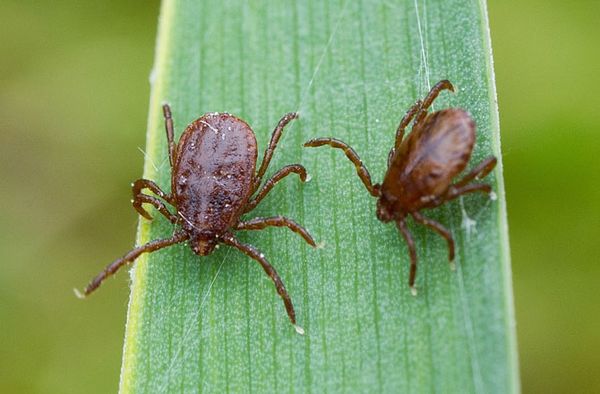Ticks are generally picked up by your pet when it rubs up against brush, shrubs or undergrowth.
Most often, ticks will set up shop on a dog's neck, in its ears, between its legs and body, and between its toes. On cats, they're usually found on the neck or face. Besides causing irritation and anemia, they can also spread diseases, such as Lyme disease and Rocky Mountain spotted fever to both pet and people [source: Lakewood Animal Hospital].
Advertisement
Here's how to remove ticks from your pet:
- Avoid direct contact with the tick by wearing latex or rubber gloves. Don't touch your eyes, nostrils or mouth after making contact with the tick.
- Ask someone to hold down your pet and keep it calm while you're removing the ticks.
- Run some alcohol on and around the tick.
- Grasp the tick with tweezers as close as possible to your pet's skin.
- Pull straight upwards with a steady, even pressure. Do not twist, jerk, squeeze or crush the tick, or you may leave some mouth parts behind, or cause the tick to leave infectious parts or fluids behind.
- Place the tick in a jar containing rubbing alcohol. Keep it for veterinary evaluation in case your pet shows signs of infection. Don't throw the tick in the garbage or flush it down the toilet, as this won't kill it.
- Check the area where the tick was. If the area isn't red or inflamed, disinfect it and place a warm compress on the area to help expel any remaining parts. Do not use tweezers!
- Remove your gloves and wash your hands with soap and water.
- Sterilize the tweezers with alcohol or by holding it over a flame.
- Check the bite area often for a few weeks for signs of local infection. If the area becomes red and inflamed, bring the pet and the tick to a vet for evaluation [source: ASPCA]. //]]]]> ]]>
Advertisement



